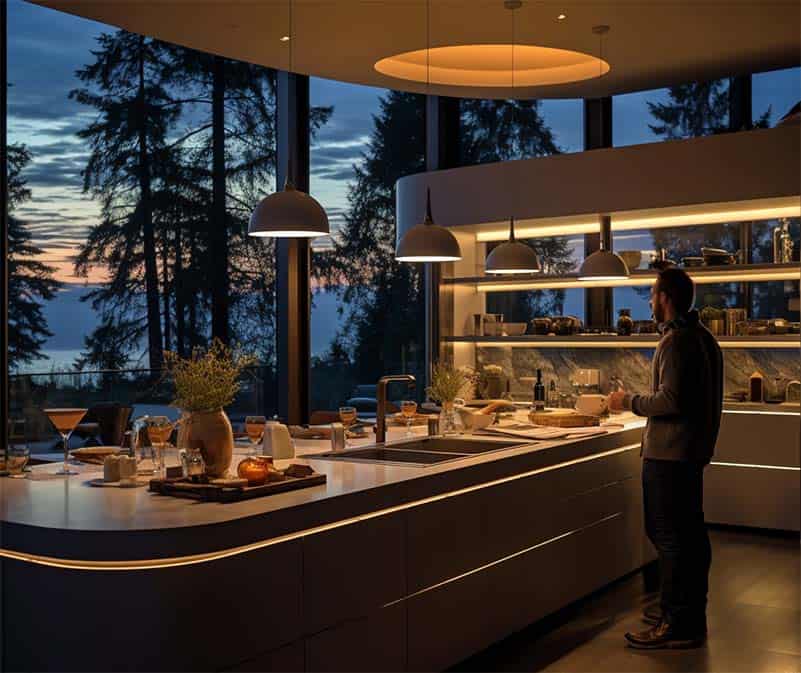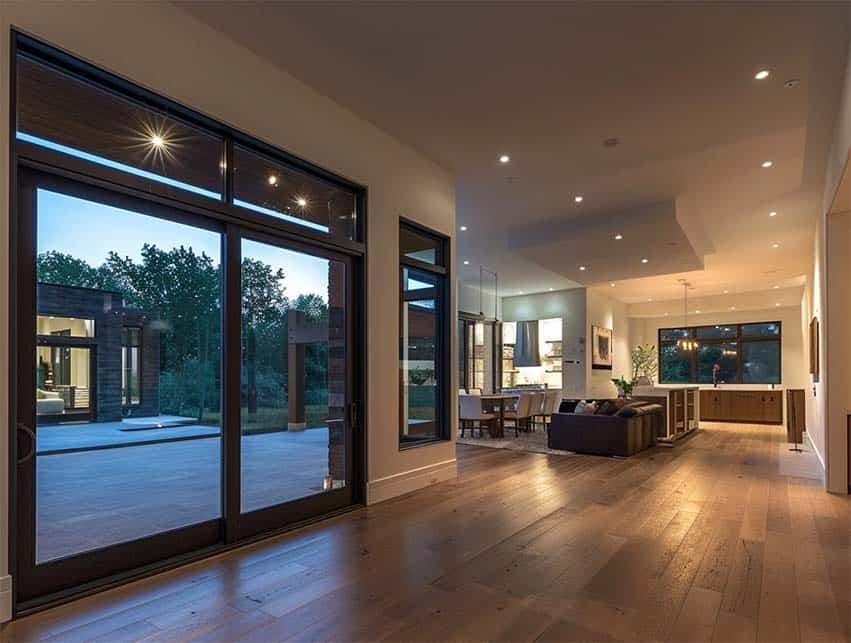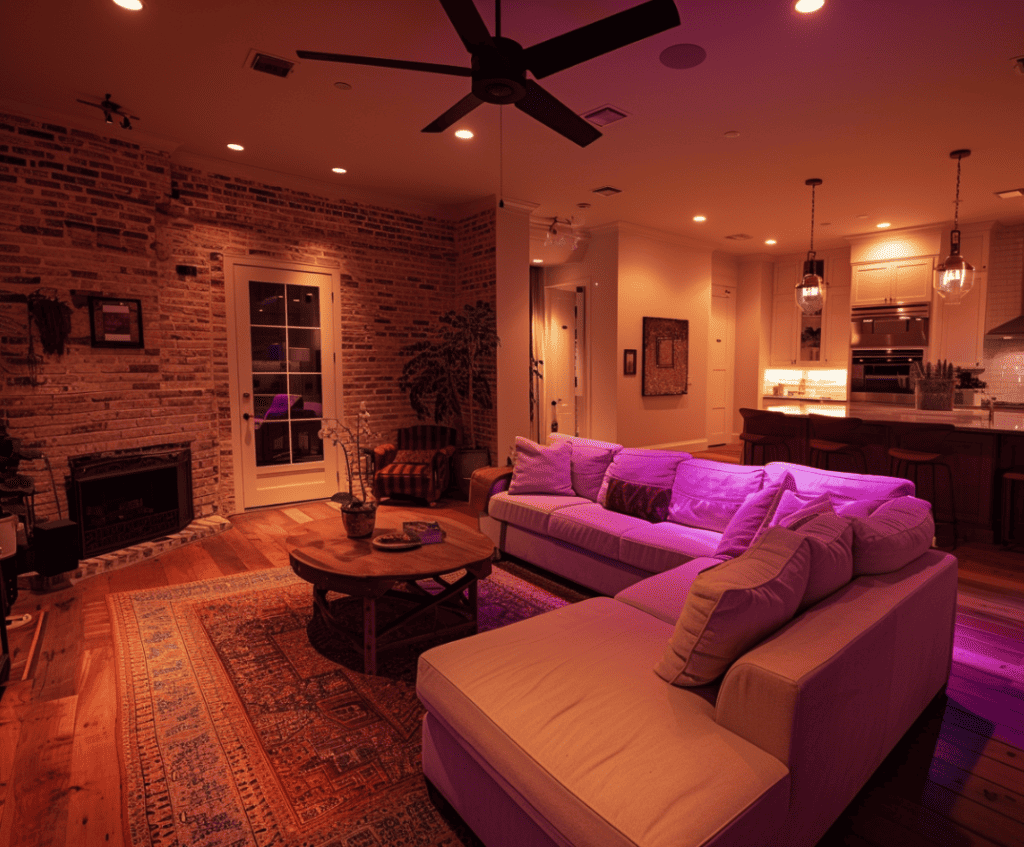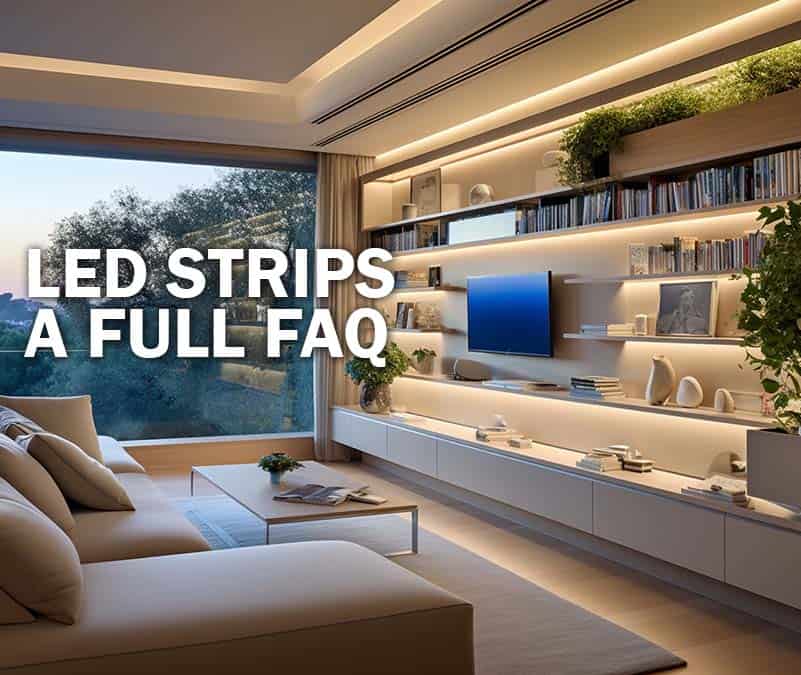Kitchen Lighting, The Contemporary Way

5 Kitchen Lighting Ideas and Assorted Color Schemes
In our many years operating as electricians in San Antonio, we can say without any doubt that the key to making your home feel different without spending the big bucks is to remodel your kitchen lighting installation. Whether or not you also change appliances and cabinetry, remodeling the light to sculpt your space with highlights, shadows, and colors will transform your kitchen.
Lighting has become a full-fledge element of kitchen design. We are far from the overhead neon tubes that “uglified” our kitchens in the 70s and 80s. Likewise, the era of the recessed can lights is over. LED lights are the way to go. With their energy efficiency, longevity, and form-factor versatility, they are now the main tool used by professional licensed electricians and interior decorators in modern kitchens.
In writing this article, we selected a handful of kitchen lighting projects carried out in recent years. This article describes 5 ways to use LED lights and LED strips to create a dynamic interplay of light, shadows, and colors to establish zones and add depth to a kitchen.
1. Under-Cabinet Task Lighting
Functionality
LED strips placed under kitchen cabinetry provide focused illumination for tasks like chopping, reading recipes, or measuring ingredients. This targeted light reduces the shadows cast by the overhead lighting system, and helps food preparation safety (think knives) and precision (think cups and fl.oz).
Design Impact
Under-cabinet lighting can also serve as a subtle nightlight, creating a soft glow that can be both practical and mood-setting. When the main lights are off, these LEDs can guide the way for a midnight snack without the harshness of full lighting.

Choosing the Right LED Strip Lights
To select the right LED strip lights you have to understand the specific needs of your kitchen workspace. Strips like SMD 5050s provide a bright light suitable for tasks; SMD 3528 strips offer a more subtle glow, better suited for accent lighting. The choice hinges on how much lighting intensity you want to have for preparing meals, and how much energy consumption you find acceptable for your household (even if LED strips are very economical, they still consume power).
Color Temperature and Kitchen Lighting Ambiance
The color temperature of LED lights directly impacts the ambiance of your kitchen. It is a bit counter-intuitive but a lower Kelvin rating yields a warm white light that creates a cozy and inviting atmosphere. This is good for kitchens that double as dining spaces. In contrast, a higher Kelvin rating produces a cool white or daylight hue: this is appropriate for tasks that require concentration and alertness, like chopping.
Dimming and Control Options for LED Under-Cabinet Lighting
Integrating dimmers and control systems with under-cabinet LEDs gives a dynamic dimension to a static system. Smart home systems offer the convenience of adjusting lighting levels from a smartphone or voice commands (like Alexa), adding a touch of “modernity” to practical functionality.
Integrating Task Lighting in the Overall Kitchen Lighting Design
Under-cabinet lighting must complement the design of your kitchen, not detract from it. We position LED strips to highlight backsplashes and work surfaces without creating unwanted shadows. In our opinion, the goal of this type of task lighting is to achieve a seamless look that enhances both beauty and practicality.
Safety Considerations for Under-Cabinet Lighting
The safety of your under-cabinet lighting is a non-negotiable aspect of your remodeling project. Licensed electricians will always opt for UL-listed LED strips to meet safety standards. Likewise, they will insulate all wires and connections to protect your family against electrical hazards.
How Do You Light for Different Work Surfaces?
Different countertop materials reflect light differently. The type of under-cabinet lighting will therefore depend on what you have. Glossy surfaces like quartz and marble benefit from LED strips with a diffuser: they soften the light and reduce glare. With matte surfaces like rough stone, slate, Formica, and vinyl, we think it is better to use brighter strips to offset the lack of reflection. As professional electricians, we pay attention to adjusting the positioning and intensity of the LEDs to provide uniform lighting.
2. In-Drawer and In-Cabinet Lighting
Functionality
This is rarely done, but the effect is awesome. We can install LED strips inside drawers and lower cabinets, activating when opened. This not only helps in finding items in your deep lower cabinets and drawers, but also adds a layer of surprise, luxury and high-tech functionality to your kitchen.
Design Impact
The surprise element of light appearing upon opening a drawer or cabinet is a touch of modern sophistication. It also creates a contrast between the lit interior and a darker exterior at night, making it easier to find items in a barely lit kitchen.

Selecting LED Lights for In-Drawer and In-Cabinet Use
When outfitting drawers and cabinets with LED lights, we typically opt for compact and flat-profile LED strips that fit snugly into tight spaces. These lights need to provide sufficient illumination to identify contents easily without overwhelming the space around with brightness. If you select LEDs with a high color rendering index (CRI), you ensure that the colors of your utensils and ingredients appear true to life.
Impact of Color Temperature on Visibility and Mood
Color sets the mood and affects visibility. Cooler temperatures work well for utility drawers and for cabinets storing non-food items. Cool LED strips provide a crisp, clear light. For pantry drawers or cabinets with food items, LED with warmer temperatures create an inviting glow, making ingredients look more appealing and natural.
Smart Controls for In-Drawer and In-Cabinet Lighting
We can equip in-drawer and in-cabinet lighting with smart sensors that trigger lights on/off when the drawer or cabinet opens and closes. This not only saves energy but also enhances your everyday experience by eliminating the need for manual switches. Advanced smart home systems can even self-adjust LED brightness based on the time of day or the ambient light in the room.
Harmonizing In-Drawer/In-Cabinet Lights with a Kitchen Lighting Design
We integrate in-drawer and in-cabinet lighting as a design element by choosing LED strips that align with the color scheme and style of your kitchen. Concealing the lighting fixtures enables us to maintain a clean look and ensure the LED light strip becomes a natural part of the whole, not an extra feature.
Ensuring Safety in In-Drawer and In-Cabinet Lighting
Like for under-cabinet lighting, in-drawer and in-cabinet lighting installation must be safely done. We use low-voltage LEDs to reduce the risk of electric shock and we make sure all components are properly insulated.
Customizing Lighting for Different Storage Surfaces
We tailor in-drawer and in-cabinet lighting to the surface colors and textures of the storage spaces. For darker drawer interiors, we install brighter LEDs to enhance visibility. For cabinetry with a lighter color, a softer lighting maintains clarity without creating a stark contrast. Our goal is to achieve a balanced kitchen lighting throughout.
3. Toe Kick Accent Lighting
Functionality
Toe-kick lighting consists in installing LEDs at the base of cabinetry. Typically, the strips serve as a pathway lighting solution. This is particularly useful in open floor plans, when you go in the kitchen during the evening and you don’t want to switch the overhead lights on. It is also helpful during the night when you need to keep your kitchen in low light.
Design Impact: Toe kick lighting can make cabinets appear to “float”. This adds a theatrical and contemporary feel to your kitchen. The light cast on the floor also visually expands the space, creating a sense of depth.

Selecting LED Strips for Toe Kick Accent Lighting
For toe kick accent lighting, we select LED strips that ensure a consistent and even light distribution. We need to avoid “hotspots”, areas of higher brightness. We encase the strips in a durable, moisture-resistant covering to avoid damage when you sweep or mop your kitchen.
The Role of Color Temperature
The color temperature for toe kick lighting should complement the overall lighting scheme of the kitchen. A neutral white balances well with most designs and provides a subtle transition from the floor to the cabinetry. It is bright enough to guide your steps, but soft enough not to overpower the scene at night.
Smart Controls and Automation
We can incorporate motion sensors and timers with a toe kick lighting installation. Motion sensors will activate the lights when someone enters the kitchen, for safety and convenience. Timers can be set to automatically turn off the lights at night if you forget to turn them off manually.
Integrating within the Kitchen Lighting Design
Toe kick lighting accentuates the kitchen design without becoming a focal point. It is a discreet reminder of the general lines and volumes of your kitchen, not a main feature. We conceal the LED strips so they are not directly visible. Their light should create a gentle halo effect on the floor, subtly outlining the cabinetry.
Safety Considerations
We make sure LED strips are securely mounted and wires tucked away to prevent tripping hazards or children to play with them. We use low-voltage LEDs rated for floor proximity use, considering they will be exposed to moisture and cleaning products.
Customizing Toe Kick Lighting for Different Flooring Types
We adjust the brightness and diffusion of the toe kick lighting to suit the type of flooring in your kitchen. For reflective surfaces like ceramic or Saltillo tile, we use diffused lighting to minimize glare. Hardwood and engineered wood floors will benefit from a warm light that highlights their natural grain. Pergo and vinyl floors require lighting that enhances their apparent texture.
4. Overhead Ambient Lighting
Overhead Ambient Lighting Functionality with LED Fixtures
LED fixtures like recessed downlights and pendant lights serve to create contemporary ambient lighting. Recessed downlights distribute light evenly and maintaining great luminosity throughout the space. We place them strategically to light up the entire kitchen and avoid cluttering the view. Pendant lights serve to create focus on key areas like islands or sinks. They combine style with functionality.
Design Impact
Overhead LED fixtures contribute to the kitchen lighting design by providing layers of light that enhance spatial dimensions. Recessed lighting is often used when you seek to obtain a minimalist look. Pendant lights become a focal point over a kitchen island or a breakfast nook, adding a personal touch to the general design. Both types of lighting accentuate the height and openness of a kitchen. The ability to dim or brighten the lights allows for a customizable ambiance that complements the brighter, more focused task lighting.

Choosing the Right LED Fixtures for Overhead Ambient Lighting
When working with homeowners to select the overhead ambient lighting, we look at LED fixtures like recessed downlights, pendant lights, and flush mounts. Recessed LED downlights offer a sleek look and when strategically placed, they provide an even lighting across the kitchen. Pendant lights serve as both a source of illumination and a style statement. Flush mounts are well-adapted to kitchens with lower ceilings where recessed lighting is not an option. They provide a broad light without intruding into the space.
Color Temperature
The color temperature of overhead kitchen lighting shapes the ambient atmosphere. LEDs with a warm white color temperature create a welcoming and relaxed environment, very suitable for dining areas or open-plan kitchens. For a more energizing effect, especially in areas where food preparation takes place, we can opt for a cooler white that simulates daylight. When homeowners seek to create a specific “period lighting”, we will use color LEDs.
Smart Controls
Just like for the other kitchen lighting ideas presented above, we can enhance overhead ambient lighting with smart controls adjusting the light levels based on the time of day or the task at hand. Programmable smart lights can change intensity and even color temperature, transitioning from a bright, energizing light during cooking to a softer, warmer glow for dining or socializing.
Harmonizing Overhead Ambient Lights within the Kitchen Lighting Design
Overhead ambient lighting should blend seamlessly with the aesthetics of the kitchen lighting installation. In consultation with the homeowners we select fixtures that complement the kitchen’s style — sleek, contemporary designs for contemporary spaces, more ornate fixtures for traditional kitchens. The placement of these fixtures aims at illuminating a kitchen evenly, avoiding undesirable dark spots and reducing contrast between task and ambient lighting areas. Like we mentioned above, overhead ambient lighting adds a layer of light in the space.
Safety Considerations
As licensed electricians in San Antonio, we do what is necessary to ensure electrical safety in our customers’ home. Overhead ambient lighting is no different than the rest: we make sure to install all fixtures properly and in compliance with state and federal codes. We consider for instance the weight of pendant lights and the integrity of the ceiling support. We make sure that recessed lights are properly insulated to prevent heat transfer and the risk of fire.
5. “Feature & Display” Kitchen Lighting

What if you want to highlight specific details?
LED spotlights and track lighting are well-suited choices for highlighting architectural features and artwork in the kitchen. Spotlights focus intense light on specific points, like a textured backsplash. Track lighting enables you to adjust the illumination of art pieces or feature walls. For showcasing items within glass-front cabinets, we can install LED puck lights that cast a soft, even light bringing out the beauty of dishware, glassware, and collectibles.
Design Impact of Feature & Display Lighting
Feature and display lighting draws attention to specific design elements in a kitchen. This type of kitchen lighting creates dynamic focal points and strengthens the personal character of the space. We can use spotlights and track lights to accentuate textures and colors. In glass-door cabinetry, puck light with a soft glow will highlight the transparency and craftsmanship of glassware and fine china. This type of lighting also adds contrast with dimmer areas, adding depth to the overall kitchen lighting scheme.
Selecting LED Spotlights and Track Lighting
Together with our clients, we select LED spotlights and track lighting that complement their decor and the architecture of the kitchen. Spotlights with a narrow beam angle create dramatic highlights. Those distributing light with a wider angle soften the effect. We prefer track lighting fixtures that allow directing each individual light as needed: they give you the flexibility to showcase the features you like.
Using Color Temperature for Mood in Kitchen Lighting
The color temperature of any feature and display lighting must enhance the objects or areas you want to highlight. Cooler temperatures create a crisp, clear light that brings out the detail in modern art and interior design features such as angles and limits between 2 types of material. Warmer temperatures work well to highlight traditional or rustic elements.
6. Color Schemes and Variations in Designing Kitchen Lighting
Here are 5 examples of “period styles” that we recreate in your home, in terms of fixture style and colors. They are just examples, we don’t “push” any design or any sort.

The Flower Power Style
The vibrant, free-spirited essence of the Flower Power era created color schemes that were bold and psychedelic, like hot pink, electric blue, and sunny yellow. There is a resurgence of this style in modern illustration and clothing. Colorful LED lighting can help create this style. A layer of soft glow will enhance these colors and avoid overpowering the space.
The Frank Lloyd Wright Style
Frank Lloyd Wright’s architectural style was organic, with a color palette drawing from nature. Think deep browns, rich reds, and warm ochres. LED lighting can mimic the colorful and natural light Wright integrated into his designs.

The Bauhaus Style
The Bauhaus style focused on primary colors and geometric forms. The typical Bauhaus color scheme includes bright red, yellow, and blue, accented by clean white or black. Applying this style to kitchen lighting means functional fixtures with a minimalist design, providing clear, unobstructed light.
The Bio-Design Style (Japanese and Swedish)
We know the love of Japanese and Swedish stylists for their minimalist sense of aesthetics and their use of natural shapes and muted, soft colors. They favor muted tones, soft grays, and pastels. To complement this style, a kitchen lighting has to be subtle and focused on enhancing a serene and organic feel.
The 1980s Miami South Beach Style
When we talk about the 80s style, it is hard not to think about Miami Vice and the South Beach vibe. As you remember, this color palette included seafoam green, flamingo pink, and sky (and electric) blue. To achieve this effect, your kitchen lighting will favor neon-like glows and use fixtures with this very specific vibe.
How About 2023-2024 Trends?
Neutral Tones
As per Behr’s Color of the Year, ‘Blank Canvas’, warm and welcoming whites, creams, grays, and greiges are trending. These neutral tones offer a versatile backdrop for LED lighting, allowing for a range of ambient effects from soft and subtle to bright and clear. We can see an illustration of this in Better Homes & Gardens
Artistic Accents
A focus on unique, artistic elements like a dark red-brown Wenge wood island bar top suggests a trend towards incorporating natural, rich colors that can be accentuated with targeted LED spotlighting or under-counter lighting to enhance the depth and luxury of the material. Here is a source of inspiration: Houzz
Authentic Materials
With a move away from faux finishes, 2023 is about authenticity in the kitchen. This trend can be complemented with lighting that brings out the true colors and textures of natural materials, such as stone or wood, with LEDs that have a high color rendering index (CRI).

Two-Tone Kitchens
Two-tone color schemes were a design thing of the late fifties. They are coming back in force, with a modern inspiration that delivers depth. Lighting plays a natural role here, with warmer lights emphasizing the lighter tone and cooler lights bringing out the depth of the darker tone. Find some inspiration in this article: Homes & Gardens
Pastels
Pale greens and pastel pinks offer a sophisticated and lighter take on kitchen color schemes. Although this style is older than 2023, for all intents and purposes it is timeless and very soothing to the eye. For a kitchen lighting installation, LED with dimming capabilities will serve to illuminate these colors softly. A high CRI helps the color scheme to remain true to hue.
Dark & Dramatic
The radical blue-black color palette adds depth and dimension, and it serves the trend towards bold, dramatic design features. In a kitchen lighting project, this color palette is paired with LED lighting that highlights specific details to really make them pop out. The blue-black color scheme can be elegant. In our opinion, it certainly helps creating a very contemporary atmosphere.
About All Star Electric
All Star Electric is a San Antonio electrical contractor serving San Antonio proper and its neighborhood of Castle Hills, Alamo Heights, Selma, and Helotes for almost 30 years. As residential licensed electricians we help people repair any electrical installation that is not up to code. We also remodel lighting installations to save on energy costs and give a house a completely transformed look. We are Tesla Certified Installers of Level 1 and Level 2 EV chargers. Call us at (210) 391-0274 for any electrical repair and any electrical design project you have in mind.
Additional Resources for Kitchen Lighting
All Star Electrical: Lighting installations
Kitchen Lighting Installation: another post on this rich topic




























